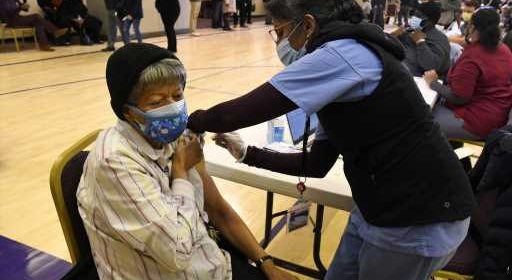Colorado COVID cases expected to keep declining into mid-October

COVID-19 infections should keep falling through mid-October, but a new wave of infections this fall is likely, a member of the state’s modeling team said Wednesday.
Hospitalizations for the virus decreased for a third week, though the drop was smaller than in the previous two weeks.
The Colorado Department of Public Health and Environment reported 236 people were receiving hospital care for COVID-19 as of Tuesday afternoon, down from 243 a week earlier. Since the other numbers point to continued declines, this week’s relatively flat hospitalization number likely just reflects day-to-day variation, said Bailey Fosdick, a member of the modeling team and associate professor of biostatistics and informatics at the Colorado School of Public Health.
“We’re not reading into the slightly slower decline in the past week,” she said.
The state health department recorded 7,227 cases in the week ending Sunday, a decrease of almost 1,300 from the previous week. The positivity rate remained roughly level, with an average of 7.6% of tests coming back positive over the past seven days. When the positivity rate falls, that’s a sign fewer cases are going undetected and that spread is decreasing.
Wastewater surveillance data continues to show that the virus’ prevalence is dropping, Fosdick said. But while the situation is improving, the virus is still relatively widespread, she said.
“It’s getting better, but it’s still not great,” she said. “There’s still a lot of COVID out there.”
The number of active outbreaks in the state dropped to 344 on Wednesday, from 376 a week earlier. Most of the decline came from older outbreaks ending in assisted living facilities and child care centers.
Federal health officials have warned a fall and winter wave looks likely, and have urged the public to get updated booster shots meant to protect against current variants when they become available. For now, cases and hospitalizations also are slowly decreasing nationwide, according to data from The New York Times.
At the moment, the numbers are dropping because the virus is running out of susceptible people to infect, Fosdick said. People’s immunity will wane over time, and how fast that happens will help determine how large a fall wave may get. Other factors that will influence the next few months include weather, what variants are circulating and whether people take precautions like wearing masks and staying home when they feel sick, she said.
“I think people need to remember all the tools we have in our toolbox,” she said. “Let’s be equipped and ready to handle this.”
Subscribe to bi-weekly newsletter to get health news sent straight to your inbox.
Source: Read Full Article